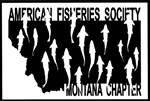Loading...
Abstract
To support river restoration of the Upper Clark Fork, a final clean-up plan is needed for the Warm Springs Ponds. The Warm Springs Ponds are a series of water treatment settling basins along Silver Bow Creek that trap copper, arsenic, cadmium, lead, and zinc, and limit these heavy metals from entering the Upper Clark Fork River. As a result, these ponds contain an estimated 19 million cubic yards of contaminated sediment. Despite the contamination, the Warm Springs ponds are locally known for supporting trophy-sized trout and providing critical habitat for migratory birds. Given the recreational use and local attachment to the Warm Springs Ponds, there is a need to understand and integrate public use of and perceptions of the ponds into future reclamation plans. Undergraduate students at the University of Montana Western are engaged in a collaborative research project to integrate public perceptions into future restoration plans. A public survey was co-developed in collaboration with Montana Fish, Wildlife & Parks, U.S. Environmental Protection Agency, Clark Fork Coalition, and Atlantic Richfield Company. Students are also conducting interviews with key stakeholders and participant observations at the ponds to capture the range of uses and diverse perspectives of the ponds. Integrating public interest into the final clean-up plan can enhance public acceptance and thus long-term success of restoration efforts for the Upper Clark Fork.
Start Date
2-3-2021 11:55 AM
End Date
2-3-2021 12:10 PM
Document Type
Video
Crootof presentation: video transcript
Restoring the Upper Clark Fork: integrating public perceptions of the Warm Springs ponds & conducting collaborative research for successful river restoration
To support river restoration of the Upper Clark Fork, a final clean-up plan is needed for the Warm Springs Ponds. The Warm Springs Ponds are a series of water treatment settling basins along Silver Bow Creek that trap copper, arsenic, cadmium, lead, and zinc, and limit these heavy metals from entering the Upper Clark Fork River. As a result, these ponds contain an estimated 19 million cubic yards of contaminated sediment. Despite the contamination, the Warm Springs ponds are locally known for supporting trophy-sized trout and providing critical habitat for migratory birds. Given the recreational use and local attachment to the Warm Springs Ponds, there is a need to understand and integrate public use of and perceptions of the ponds into future reclamation plans. Undergraduate students at the University of Montana Western are engaged in a collaborative research project to integrate public perceptions into future restoration plans. A public survey was co-developed in collaboration with Montana Fish, Wildlife & Parks, U.S. Environmental Protection Agency, Clark Fork Coalition, and Atlantic Richfield Company. Students are also conducting interviews with key stakeholders and participant observations at the ponds to capture the range of uses and diverse perspectives of the ponds. Integrating public interest into the final clean-up plan can enhance public acceptance and thus long-term success of restoration efforts for the Upper Clark Fork.
